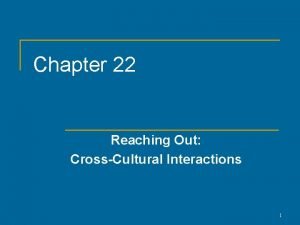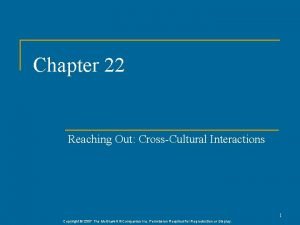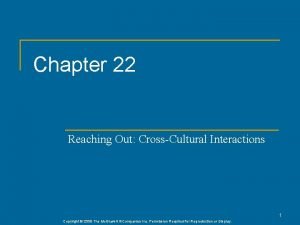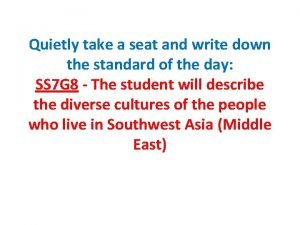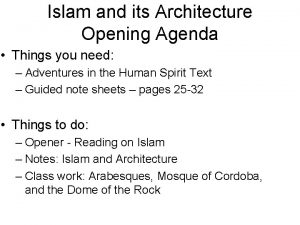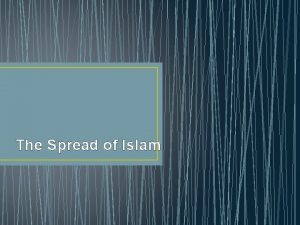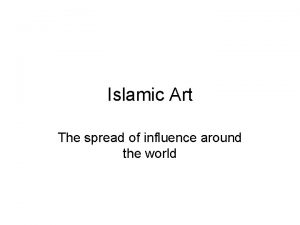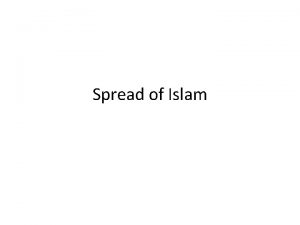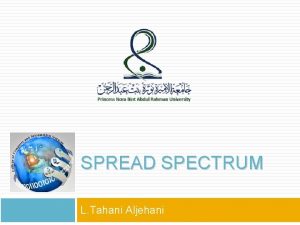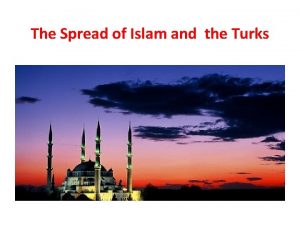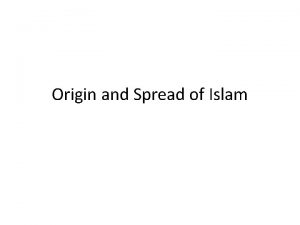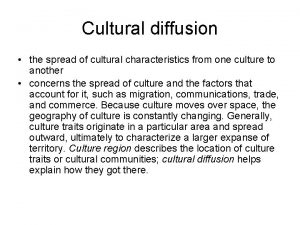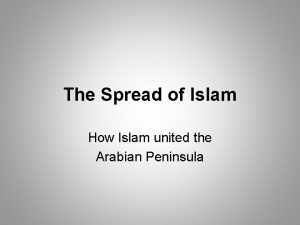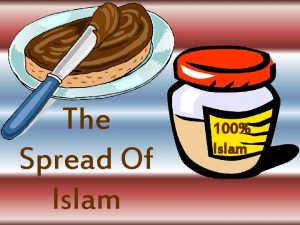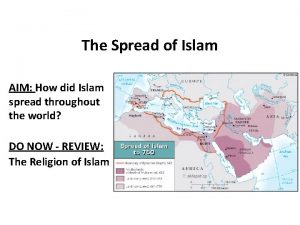The Spread of Islam and Cultural Interactions Islam















- Slides: 15

The Spread of Islam and Cultural Interactions

Islam In South Asia • Islam transmitted via invaders, traders, & migrants to Asia • Political Division & the First Muslim Invasion • First Muslims were traders • Muhammad ibn Qasim declared Sind & Indus Valley as part of Islamic Empire after dhows were attacked by pirates • Hindus and Buddhists treated as Dhimmi • Hindus and buddhist were allowed to keep their religion and practices. Essentially they had a protected status

• From Booty to Empire: 2 nd wave of Muslim Invasion • Turkish dynasty established in Afghanistan • Mahmud of Ghazni • Led Muslim raids & conquest of N. India • Muhammad of Ghur • Conquest of Gangetic Plain • Assassinated

The Delhi Sultanate 13 th-16 th Centuries • Lasted for 300 years • Never developed a highly centralized bureaucracy similar to the Chinese • Political decentralization continues in India • Local kingdoms continued • The Sultanate was never able to effectively impose it’s polices • Wanted to extend its control a territory to the south but had to fend of the Mongols from the northwest • Successfully prevented the Mongols from conquering South Asia but eventually fell to another Islamic empire, the Mughals


• Patterns of Conversion • Low-caste & outcast Hindus • Buddhists • Some converted to escape Jizya (tax) • Patterns of Accommodation • Islam made little impression on Hindus as a whole • Hindus and Muslims do not like each other. • Muslims failed to integrate into Hindu society • Often seen as foreigners • Muslims & high-cast Hindus contact was rare • Some Muslims adopt sati


Islamic Challenge & Hindu Revival • Bhaktic cults (Hindu) • religious groups who stressed the importance of strong emotional bonds between devotees and the gods or goddesses • Open to women and untouchables • Mira Bai – female religious writer and poet • Kabir – Muslim mystic • Tried to minimize differences between Hindus and Muslims


Srivijaya Empire • Was a large trading empire in SE Asia • Controlled much of modern-day Indonesia and the Malay archipelago • Traded extensively in India and China • Leads to the incorporation of Buddhist and Chinese political practices • leads to the Introduction Islam • The empire acted as a vassal state to China • Official language was Old Malay- incorporated aspects of Sanskrit, Persian, and Arabic • Lost its influence when the Chola empire gained dominance in the waters around SE Asia


Trading Contacts and Conversions in SE Asia • Trading leads to peaceful conversions • Sufis played an important role • Sufiism- Islamic mysticism that emphasizes introspection and spiritual closeness with God • Important trading cities • Malacca • Demak • Elites practiced Buddhism, but most of population converted to Islam • Islam was infused with Mystical strains from Sufis • Women had a strong position • Matrilineal


The Arrival of Islam in N. Africa • As part of the Roman & Greek Empires Christianity was main religion • Muhammad’s followers swept across N. Africa spreading Islam • Arab & Berber armies • Spread stopped by Martel & the Franks at the battle of tours in 732 • Almoravids & Almohadis– puritanical reformist • Launched jihad • Islam promoted equality of believers • Social stratification continued • Uniting of powers of the state & religion appealed to African kings

 Chapter 22 reaching out cross-cultural interactions
Chapter 22 reaching out cross-cultural interactions Chapter 22 reaching out cross-cultural interactions
Chapter 22 reaching out cross-cultural interactions Chapter 22 reaching out cross-cultural interactions
Chapter 22 reaching out cross-cultural interactions What was the ghazu? what was the ummah?
What was the ghazu? what was the ummah? Spread of islam through architecture exit slip
Spread of islam through architecture exit slip Spread betting fx
Spread betting fx Spread betting islam
Spread betting islam Spread betting islam
Spread betting islam Accounting information system chapter 1
Accounting information system chapter 1 Qualitative and quantitative research
Qualitative and quantitative research Contractionary fiscal policy interest rate
Contractionary fiscal policy interest rate The properties and interactions of magnets are called
The properties and interactions of magnets are called Sphere interactions
Sphere interactions 6.1 habitats niches and species interactions answer key
6.1 habitats niches and species interactions answer key Product architecture example
Product architecture example Factor influencing communication process
Factor influencing communication process
